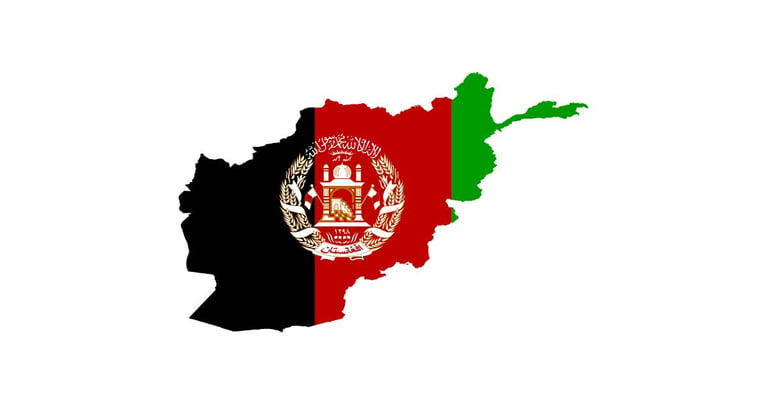11 Facts About Afghanistan🇦🇫
Explore 11 amazing facts about Afghanistan, including its rich history, culture, and unexpected discoveries...a brief exploration of a beautiful and resilient land.
FACTS ABOUT


Afghanistan Flag Map (credit: PIXABAY)
You probably have come across a lot with regard to Afghanistan, however, how much do you actually understand about it? The majority of the news highlight violence, yet underlying that, exists a nation rich in creativity, culture, and resiliency that dates back thousands of years. As an individual who previously categorized Afghanistan under "war zones," I was truly amazed by the information I discovered when I did more research. These 11 facts may completely change your preconceptions, regardless of whether you are a history buff, a culture vulture, or simply an individual who enjoys learning new things.
Afghanistan Has Never Been Colonized By a Foreign Power: Afghanistan has endured longer than civilizations, therefore we must get off to a solid start. Three times, the British made an attempt. The Soviets tried it. Afghanistan has never been effectively colonized, and this reality remains unchanged despite contemporary military invasions. Because of its topography, tribal organization, and strong local opposition, settlement has proven to be extremely challenging. The phrase "graveyard of empires" is not a coincidence.
Afghanistan is Home to The World's First Oil Paintings: You might be surprised to learn that oil painting originated in Afghanistan, not Europe. The oldest documented instances of oil-based paint are murals from the 7th century CE that were discovered in the Bamiyan caves. This indicates that a millennium prior to the Renaissance even touched a brush, Afghan painters were trying out creative methods of painting.
Afghanistan Has Over 14 Ethnic Groups: Afghanistan's culture is diverse. There are more than 14 different ethnic groups living there, including Pashtuns, Tajiks, Hazaras, Uzbeks, and Turkmen. Every community contributes its own customs, attire, language, and food. Consider residing in a nation where people speak dozens of different languages and where no two areas are alike.
Afghanistan's National Sport is Buzkashi: A typical Sunday football game is not what Buzkashi is. Picture a quick-paced, rough-and-tumble competition between guys on horseback who are vying for a headless goat carcass. That is Buzkashi, the national sport of Afghanistan and one of the world's most demanding sporting events. It is intense, challenging, and intensely contested.
Afghanistan Was a Key Part of The Silk Road: Afghanistan served as a crossroads for traders, pilgrims, and explorers long before borders and nation-states were established. Cities like Herat and Balkh were traversed by the Silk Road, which connected China with Europe and the Middle East. This clarifies the reason why Afghan culture is such a distinctive fusion of elements and goes beyond only old past.
Afghanistan Has One of The Largest Copper Deposits in The World: Aynak, one of the biggest unexplored copper reserves in the world, is located beneath its untamed mountains. Although safety worries and archaeological findings at the site have delayed construction, professionals think it might change the economic landscape of the area. Buddhist remains that date back 2,000 years are situated directly on top of billions of dollars' worth of metal, creating an odd clash between ancient history and present-day economics.
Afghanistan’s Capital, Kabul, is One of The World’s Highest Capitals: One of the world's highest capital cities, Kabul is situated at roughly 1,800 meters (5,900 ft) above sea level. Thin air, chilly winters, and breathtaking views of snow-capped mountains from almost each viewpoint are all part of that altitude. This capital city practically towers over the majority of others.
Afghanistan Has Hosted Buddhist Civilizations: Afghanistan was a flourishing Buddhist hub prior to Islam. Symbols of this period were the gigantic Buddhas of Bamiyan, which were sadly shattered in 2001. A hidden world of monasteries and sculptures that tell an entirely unique narrative of Afghanistan's religious past is still being unearthed at sites like Mes Aynak.
Afghanistan’s New Year, Nowruz, is Celebrated on The Spring Equinox: The spring equinox coincides with Afghanistan's New Year ceremony, Nowruz. It is a season for family get-togethers, housecleaning, tree planting, and beginning afresh, all of which have their roots in ancient Persian customs. No matter the religion or nationality, it is one of the handful of occasions of the year when various Afghan groups come together.
Afghanistan is One of The Most Mountainous Countries in The World: Afghanistan is among the world's most mountainous nations. With peaks rising more than 7,000 meters, the Hindu Kush range runs like a spine throughout the nation. These mountains serve as obstructions and vital resources for many settlements, influencing everything from politics to agriculture. They are more than simply gorgeous landscapes.
Afghanistan's Flag Has Changed More Than 25 Times: Afghanistan has changed its flag more than any other nation...more than 25 times, to be exact. Monarchy, republics, communist governments, Islamic governments, and foreign interventions are all reflected in these transitions. It is a visual chronicle of a nation that has survived hardship and is still standing.
Summary: The Spirit That Endures
Afghanistan is not as it is commonly believed. There are oil paintings, mountain cities, Buddhist heritage, and diverse cultures in addition to deserts and conflict. Finding details that give an old story fresh life may be exciting as well as frustrating because the world just perceives preconceptions. The nation's narratives are as genuine as its problems, and they should be displayed in all their colour. Therefore, when you encounter the word "Afghanistan," do not only think of conflict; think of pictorial art, snow-capped mountains, Nowruz festivities, and powerful Buzkashi horses charging over arid fields. There is always more going on underneath and Afghanistan is evidence of that.
